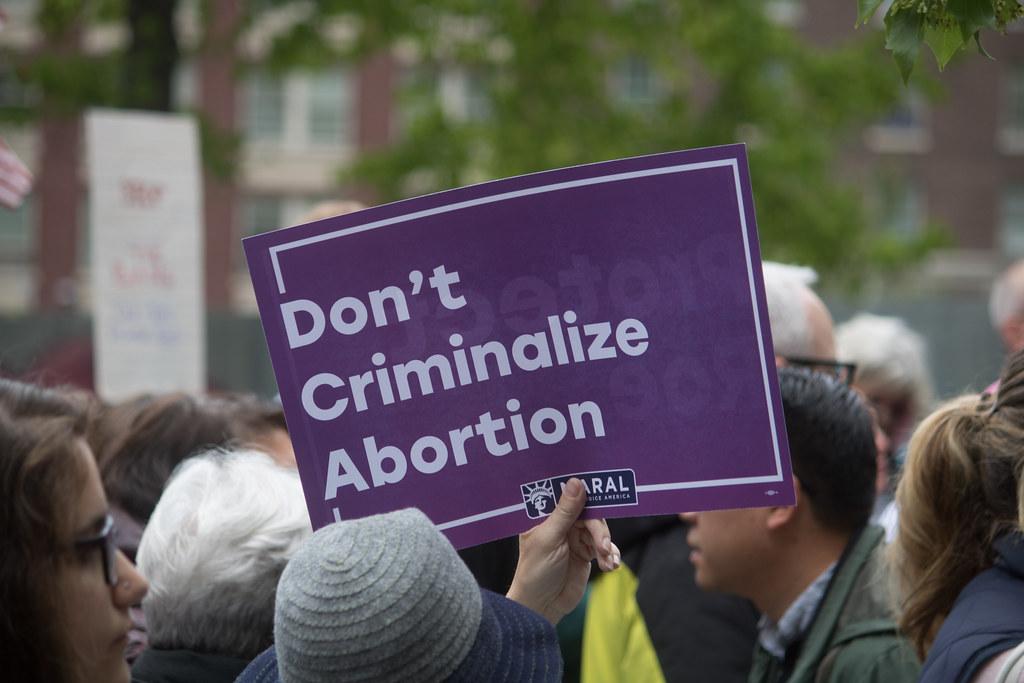A junior at a Texas high school was having a good time at a party with her friends, but she doesn’t remember anything after that. Turns out, she was drugged and raped. Weeks later, when her period is late, she takes a test and finds out she is pregnant. What will she do? She has her whole future ahead of her — she wants to study electrical engineering and design car motors. She knows her options. She could go through with the pregnancy — have a child, struggle through high school, and possibly drop out. But she has always had a plan: wait until she can support a family and give her children a good life. As a pregnant teen, she knows she may not be in a position to do that. She will never forgive the boy who took advantage of her, and she doesn’t want her child to miss out on having a father. Her best option is an abortion. When she shows up at the clinic, they turn her away. You’re eight weeks pregnant, so you can’t have an abortion in Texas. I’m so sorry. The news shocks her. She goes home crying, knowing her life will never be the same again.
The Texas Heartbeat Act (SB-8) is immoral at best, but it is also unconstitutional on several grounds. In the past, courts have blocked abortion-limiting bills from becoming law. But Texas legislators found a workaround. Rather than public officials curtailing abortion, private citizens curtail abortion by suing abortion providers. This model, known as an express private right of action, allows any citizen with an objection to abortion to sue an abortion provider, and if successful, the citizen plaintiff could receive $10,000. The law is unfair because it invites random strangers to target providers to make money despite not being personally wronged. The law also makes no considerations for rape or incest, a fact that is cruel to women who do not wish to go through with such a pregnancy.
In Roe v. Wade, the Supreme Court ruled that abortion was a right of women until the fetus could survive outside the womb (about 23 weeks into pregnancy). In violation of Roe, the Texas law curtails this limit to just six weeks into pregnancy, before many women know they are pregnant (fetal heartbeat is detected around week eight). The conservative-led Supreme Court twice declined emergency requests to block the Texas law on narrow technical grounds. The decisions did not reflect the opinions of the justices on whether the law was constitutional. The court is still allowing abortion providers to move forward with their lawsuits, however. The law is still receiving full scrutiny by the Supreme Court, which is considering two separate challenges to the law. In December 2021, a Texas state judge ruled that the law is unconstitutional because of its citizen enforcement method, but did not issue an injunction to stop citizens from suing abortion providers. Interestingly, the court ruled that the law cannot be enforced in Texas while these lawsuits are still in progress. On January 7, the 5th U.S. Circuit Court of Appeals will hear arguments on the constitutionality of the law and its enforcement method. This case will not solve the issue, however, as the case will likely be directed to the Texas Supreme Court and then back to a federal district court.
The 1992 Casey v. Planned Parenthood case was a further clarification by the Supreme Court of when abortion is legal. In Casey, the Supreme Court lowered the state’s ability to restrict abortion by stipulating a new criterion called “undue burden” which would eliminate a state law that had “the purpose or effect of placing a substantial obstacle in the path of a woman seeking an abortion of a nonviable fetus.” Under this definition, the Texas ban should be deemed unconstitutional if it goes to the Supreme Court again. In the next few months, the court will make their decision on Dobbs v. Jackson Women’s Health Organization about the constitutionality of Mississippi’s ban on abortions after 15 weeks. Under Casey, this would be an undue burden, but court watchers believe that at least five votes could change how undue burden is defined, create a new standard, or reject the right to an abortion and leave it up to states. This means that Roe itself may soon be overturned, and this would automatically overturn Casey as well. If Roe was overturned, states would make their own abortion laws. If the law does return to the Supreme Court and is judged on its provisions, it could possibly be struck down, but only if Roe is not overturned. Five of the nine justices are conservative, so strikedown is unlikely.
The intentional vagueness of one provision in the new law imperils a wide swath of people. The Texas law states, “Any person… may bring a civil action against any person who… knowingly engages in conduct that aids or abets the performance or inducement of an abortion…” The vague definition of aiding and abetting is up for interpretation, and this could lead to huge monetary losses for citizens. This method of enforcement is unheard of and not mentioned in the Constitution.
There are, however, potential ways to reverse the new law besides Supreme Court strikedown. A possible solution is the passage of new federal abortion law. House Speaker Nancy Pelosi has proposed a bill to make abortion a right under statutory law. The Women’s Health Protection Act would establish the legal right to abortion nationwide and prevent states from restricting the practice. The bill passed the House and is currently on hold in the Senate. However, thanks to the filibuster rule, even the slim 51-50 majority (counting VP Kamala Harris) that Democrats have in the Senate is unlikely to push the act forward.
The Biden administration’s Department of Justice (DOJ) is exploring “all options” to challenge the Texas law, with Attorney General Merrick Garland vowing to support Texas abortion clinics and to protect women seeking abortions. Garland cites a violation of the Freedom of Access to Clinic Entrances Act (FACE), which prohibits obstruction of reproductive healthcare providers and those seeking reproductive healthcare. “The DOJ is reaching out to U.S. attorneys’ offices and FBI offices in Texas to “discuss our enforcement authorities.” Republicans claim it is the courts, not the DOJ, that should make these decisions. Garland counters that the DOJ has been enforcing the FACE Act for decades. A federal judge blocked a DOJ attempt to enjoin Texas on enforcement of the new law because he wanted to see both sides presented. However, the DOJ may have legal grounds to sue the state of Texas for posing “obstacles to the accomplishment of federal objectives.” Compared with the hurdles facing Supreme Court strikedown and passage of a federal abortion law, this is the most likely measure that could mitigate the negative effects of the abortion ban.
In response to the new law, Democrats such as New York House Rep. Alexandria Ocasio-Cortez are urging President Biden to revoke other restrictions on abortion access such as the Hyde Amendment (which he promised to overturn), which prohibits federal funding for most abortions. Democrats are also pushing to expand the Supreme Court from nine to 13 seats, which would enable Biden to appoint four Democratic justices. Democrats also hope to reverse Republican “trigger laws” that would automatically ban abortions if the Supreme Court overturned its Roe v. Wade ruling.
The Texas abortion ban raises questions about the power of states versus the federal government. Abortion providers decided to sue to stop the new law from going into effect, but they could not sue the attorney general or governor of Texas because they would not be parties to any of the future abortion lawsuits. Instead, they sued a state judge, arguing that he was a state actor that could be enjoined by the Supreme Court from presiding over civil cases (like the abortion cases) and using the power of the state to enforce the $10,000 award. Anti-abortion advocates decided to use the legal ambiguity to their advantage. They figured that the law would not be blocked by the federal government if the state was not the party enforcing it (rather, the private citizen). The Supreme Court decided that federal courts have the right to enjoin individuals who enforce laws, but they did not enjoin the state judge. But the court also said their decision was “not based on any conclusion about the constitutionality of Texas’s law, and in no way limits other procedurally proper challenges to the Texas law, including in Texas state courts.” As it stands currently, if a citizen sues an abortion provider, the provider can challenge the constitutionality of the law itself. Then the Texas abortion ban would be litigated on its merits and struck down. Despite the questionable merits of the Texas law, it could still stand as it is. The Supreme Court’s majority decision could have meant that the law was unconstitutional but the plaintiffs hadn’t sued the correct party, for example. It’s possible that the Texas law will be struck down this fall by the Supreme Court, but Texas has invented a system for other states to subvert federal laws if it is not struck down. For example, New York could allow citizens to sue people who are selling firearms. It would be ridiculous, but it would be possible.
At the moment, the Texas Heartbeat Act violates the United States Constitution and the well-deserved reproductive rights of women. This morally reprehensible law will derail the ambitions of countless women who feel scared, alone, and powerless. With the Supreme Court currently deciding whether pre-viability abortion bans are unconstitutional, the future of abortion law lays in the hands of the court.































